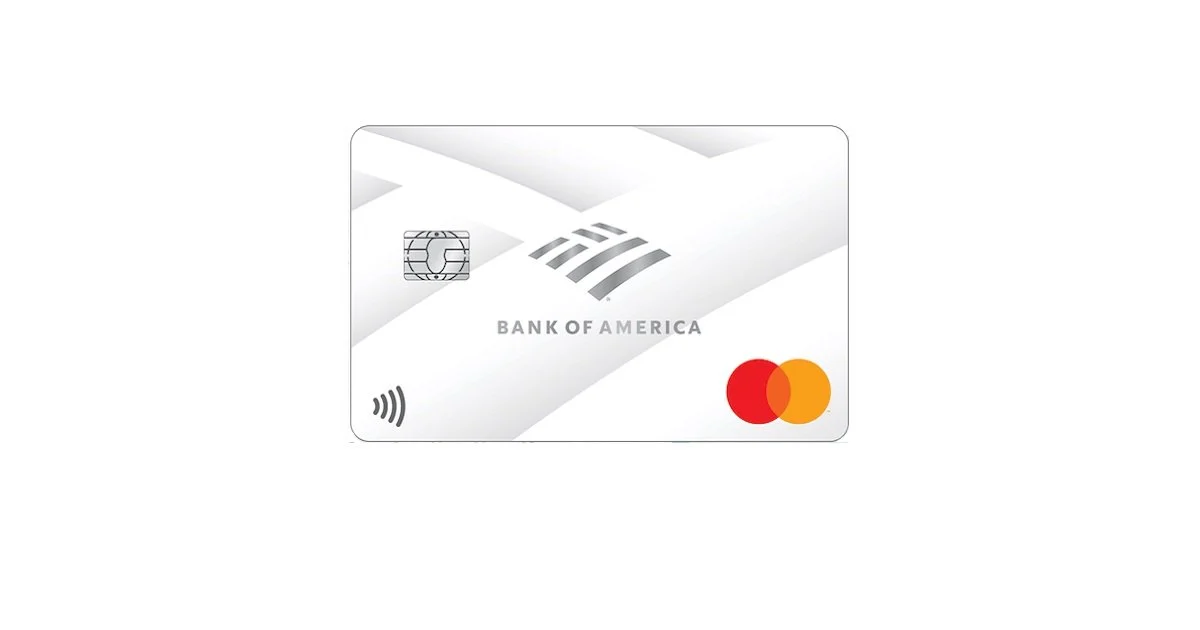Future Trends in Credit Cards: Innovations and Changes in Consumer Behavior

The Evolution of Credit Cards
The world of credit cards is constantly evolving, shaped by technological advancements and changing consumer preferences. As we look towards the future, it’s essential to explore the innovations and shifts in behavior that will define how we use credit. Awareness of these trends can help consumers make informed financial decisions.
Several key factors are driving the transformation of credit cards:
- Digital Wallet Integration: Credit cards are increasingly linked to digital wallets, such as Apple Pay, Google Pay, and Samsung Pay. This integration allows consumers to store their card information securely on their devices, simplifying transactions and enhancing convenience. For example, at a retail store, you can simply tap your smartphone on a payment terminal to complete a purchase without needing to carry a physical card.
- Contactless Payments: The popularity of tap-to-pay solutions is escalating. These contactless cards, which let users pay by holding their card near a reader, enhance convenience especially during times when hygiene is a concern. According to a survey by Visa, more than 70% of consumers are now using contactless payments regularly, exemplifying a significant shift in how we view transactions.
- Enhanced Security Features: In response to growing concerns about identity theft, innovations like biometric authentication—fingerprint or facial recognition—are being adopted to protect consumer data. Some card issuers are even incorporating features that allow users to lock their cards instantly through mobile apps, providing both security and peace of mind.
Alongside technological innovations, consumer behavior is also changing. Today’s consumers are:
- Highly Mobile: Many individuals prefer managing their finances through smartphones and apps. With intuitive interfaces, users can track expenditures, monitor billing cycles, and even set budgets at their fingertips. Mobile banking apps with substantial functionalities are quickly becoming the norm, allowing users to maintain financial health on the go.
- Value-Oriented: Shoppers now show a marked preference for rewards programs and cash back offers. For instance, a significant portion of consumers actively seek credit cards that provide perks like 2% back on groceries or travel rewards. This shift means that consumers are no longer merely relying on their credit for spending but are also keen on maximizing their financial returns.
- Conscious of Sustainability: Eco-friendly credit options are gaining traction among environmentally aware users. Some companies now offer credit cards made from recycled materials or that contribute a portion of profits to environmental initiatives. This enables consumers to feel good about their purchases, knowing they’re supporting sustainability.
Understanding these trends will not only prepare consumers for what’s ahead but also equip them to optimize their credit card usage for maximum benefits. By acting on this knowledge, they can make strategic choices that align with their financial goals and values. As we delve deeper into the future of credit cards, keeping these developments in mind will be crucial for successful financial management.
DIVE DEEPER: Click here to learn more
Innovations Shaping the Future of Credit Cards
As we venture into the future of credit cards, several innovations are emerging that promise to reshape the landscape of consumer finance. These advancements are not only optimizing the user experience but also addressing pressing issues such as security and convenience. Below are some groundbreaking developments that are set to dominate the credit card industry.
Digital Banking Enhancements
The rise of digital banking is a notable trend in the credit card sector. More consumers are turning to services that offer seamless online experiences. Digital banks and fintech companies are simplifying account management, enabling users to gain instant insights into their spending habits, credit utilization, and reward points right from their smartphones. Unlike traditional banks, these platforms often come with minimal fees and user-friendly interfaces. For example, a digital banking app may provide real-time notifications of each transaction, helping users keep track of their finances more effectively.
Artificial Intelligence and Machine Learning
Another significant trend is the integration of artificial intelligence (AI) and machine learning into credit card processing and management. Financial institutions are increasingly using AI algorithms to tailor offers and promotions based on individual spending patterns. For instance, if a consumer frequently dines out, they may receive customized cash back offers from card issuers to encourage more spending in that area. This personalization not only improves customer satisfaction but also empowers consumers to choose cards that align with their lifestyles and purchasing behavior.
Emphasis on Financial Wellness
In response to a growing awareness of financial literacy and responsibility, many card issuers are focusing on enhancing consumer education through their platforms. Credit card companies are beginning to offer tools and resources to help users understand credit scores, debt management, and budgeting techniques. This educational shift means that consumers can make informed decisions rather than merely reacting to offers or promotions. By providing access to financial wellness programs, card issuers are fostering a sense of empowerment among consumers, ultimately leading to better financial habits.
The Rise of Alternative Payment Methods
The landscape of payments continues to evolve, with the rise of alternative payment methods outside of traditional credit cards. Options such as buy-now-pay-later (BNPL) schemes are becoming increasingly popular, especially among younger consumers who prefer flexibility in managing their expenses. BNPL services allow consumers to make purchases and pay for them in installments without incurring interest if payments are made on time. This flexibility can appeal to individuals who may be hesitant to use credit cards for fear of accruing debt.
Summary of Key Innovations
- Digital Banking Enhancements: Simplified online account management and real-time transaction tracking.
- Artificial Intelligence: Personalized offers based on individual spending patterns.
- Focus on Financial Wellness: Educational resources and tools for better financial decision-making.
- Alternative Payment Methods: Options like BNPL offering flexibility for consumers.
These innovations highlight a clear shift towards a more personalized, secure, and user-friendly approach to credit cards. By embracing these changes, consumers can take advantage of enhanced financial tools while making smarter decisions about credit usage in a rapidly evolving market. As we continue to examine these trends, an understanding of how they influence consumer behavior is equally vital for navigating the future of credit.
DISCOVER: Click here to learn how to apply easily
Shifting Consumer Behavior in the Credit Card Landscape
As technological innovations continue to reshape the credit card industry, they also significantly influence consumer behavior. These changes reflect a more informed, cautious, and tech-savvy population that approaches credit with greater awareness. Understanding these behavioral shifts is essential for both consumers and credit card issuers aiming to meet the evolving demands of the market.
Increased Demand for Transparency
In recent years, consumers have grown more critical of the terms associated with credit cards. There is a heightened demand for transparency when it comes to fees, interest rates, and reward structures. A significant percentage of consumers are now researching and comparing credit card options before making a decision. They want to navigate complex jargon and assess products that offer clear value without hidden costs. Credit card companies that embrace transparency in their marketing and communication are likely to build stronger trust with their customers.
A Shift Towards Sustainability
Another notable trend is the increasing emphasis on sustainability among consumers. Many individuals today prefer to use credit cards that align with their values, including those that support eco-friendly initiatives. Some issuers have begun to create cards made from recycled materials or have introduced reward programs that allow customers to earn points for spending on sustainable brands. In fact, consumers are now more likely to select financial products that promote sustainability, showcasing a growing connection between personal finance and environmental responsibility.
Generational Differences in Credit Card Use
Generational differences also play a significant role in the evolving landscape of credit card behavior. Younger generations, such as Millennials and Gen Z, are increasingly inclined to seek out digital-first banking experiences. They value convenience and speed over traditional banking practices, often opting for mobile wallets and contactless payments over physical cards. Moreover, these generations are more likely to engage with fintech companies that offer innovative features, like budgeting tools and cryptocurrency integration, which traditional banks are still catching up to.
Managing Debt More Responsibly
Another critical shift in consumer behavior is the heightened focus on debt management. Many individuals have become more aware of the risks associated with high credit card debt, leading them to adopt smarter spending habits. Consumers are actively seeking out credit cards with lower interest rates, and many prefer to pay off their balances in full each month to avoid interest charges. This growing consciousness about credit utilization can lead to better credit scores and improved financial health over time.
Leveraging Technology for Financial Engagement
Consumers are increasingly utilizing technology as part of their credit card experience. Mobile apps and automated personal finance tools are empowering users to engage more actively with their financial habits. Applications that sync with credit card accounts provide insights on spending trends and help monitor budgets in real-time. Additionally, many consumers now favor virtual cards for online shopping to enhance security and protect their personal information. This trend exemplifies how technology is not only augmenting the credit card experience but also fostering a culture of financial awareness.
- Demand for Transparency: Consumers seek clear information on fees and interest rates.
- Sustainability Focus: Preference for eco-friendly credit card options and reward programs.
- Generational Divergence: Younger consumers prioritize digital experiences and fintech engagement.
- Responsible Debt Management: Increased focus on paying off balances to avoid interest charges.
- Technological Engagement: Usage of mobile apps and virtual cards for improved financial control.
These shifts in consumer behavior are reshaping the dynamics of credit card use, compelling issuers to adapt their offerings to meet the evolving needs and preferences of their customers. As consumers become more empowered through technology and education, the future of credit cards will be defined by those who can provide meaningful, transparent, and sustainable financial solutions.
DIVE DEEPER: Click here to discover the easy application process
Conclusion
As we reflect on the future trends in credit cards, it is clear that innovation and shifting consumer behavior are driving significant changes in the landscape. With an increasing demand for transparency, consumers are taking the time to understand credit card terms, favoring options that clearly communicate fees and rewards. This informed approach indicates a more engaged clientele who prioritize ethical considerations alongside financial benefits.
Moreover, the growing focus on sustainability signifies that consumers want their financial choices to align with their values. Financial institutions that respond to this demand are likely to attract a loyal customer base. Alongside this is the rising preference for digital solutions, particularly among younger consumers who are accustomed to seamless technology experiences.
As debt management becomes a prominent concern, many are adopting responsible spending habits, seeking to minimize interest charges and pay off balances more diligently. This newfound consciousness may very well pave the way for healthier financial futures.
Ultimately, the credit card industry stands at the intersection of technological advancement and consumer empowerment. As financial technology continues to evolve, it is crucial for issuers to adapt swiftly and effectively, prioritizing innovation and aligning their offerings with the changing needs and preferences of consumers. By doing so, they can establish strong, lasting relationships built on trust and relevance in a rapidly changing marketplace.


